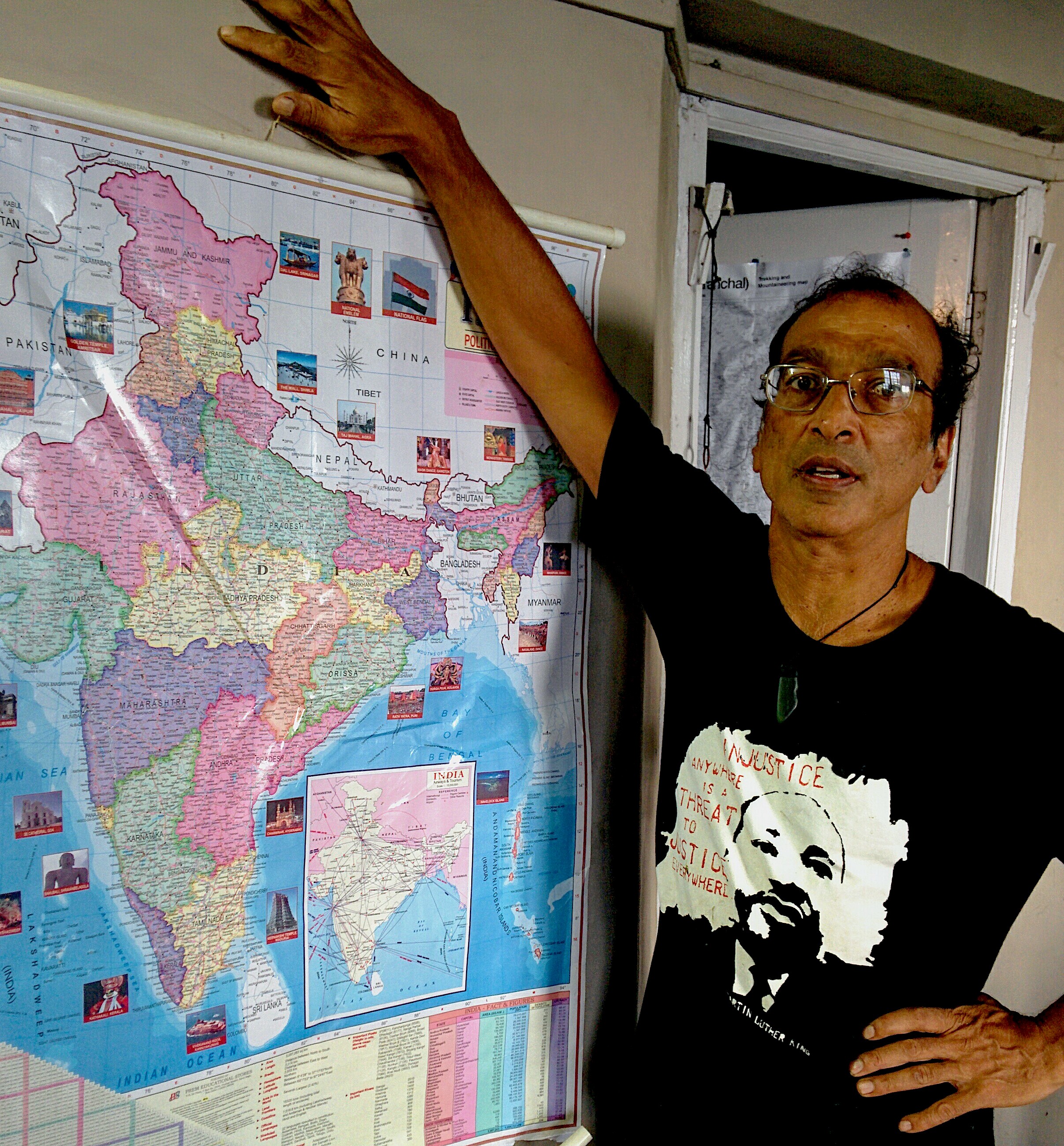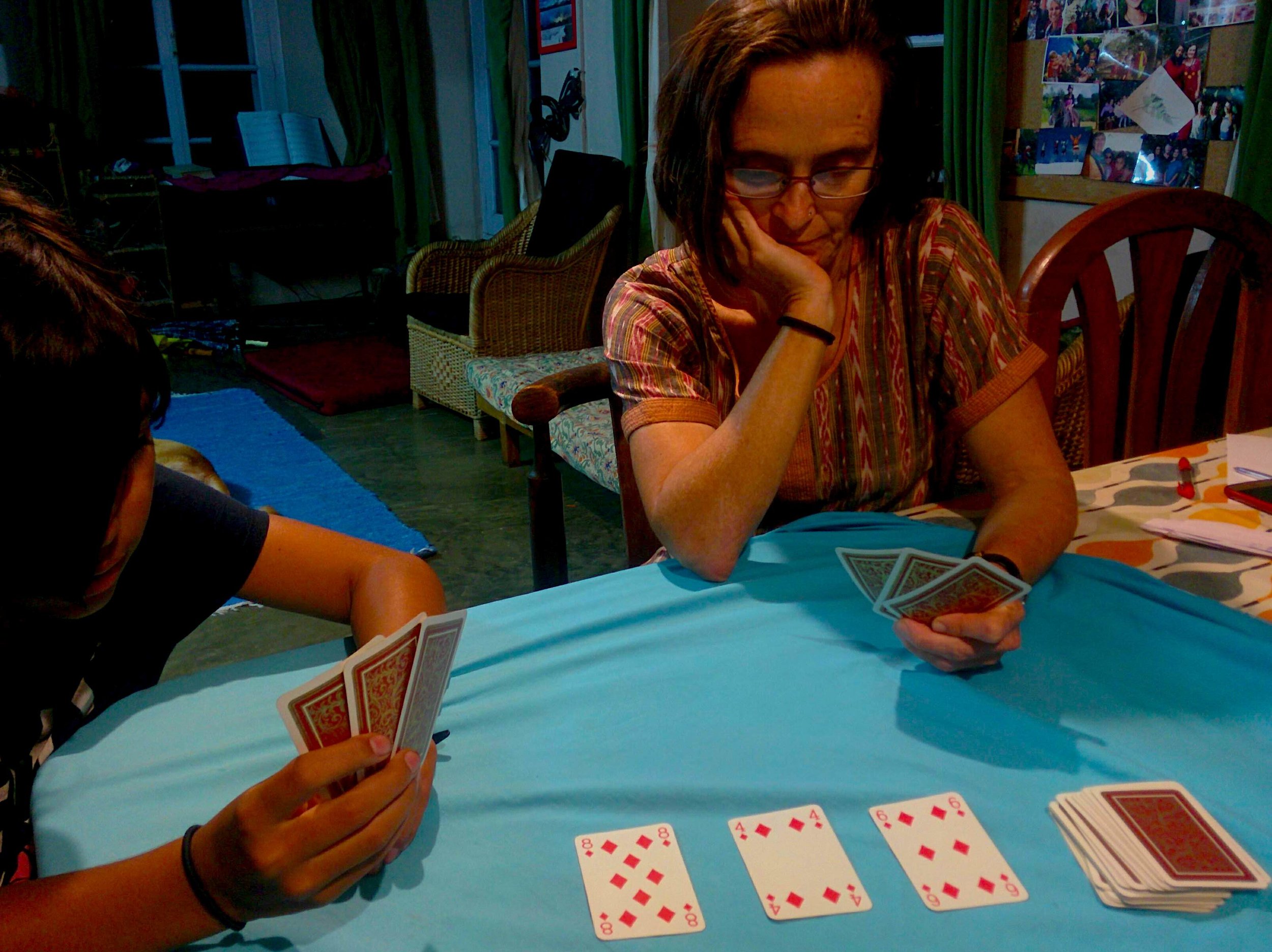The Sierpinski triangle: multiple copies of the same shape at different scales. Zeuscat.com
How and where where patterns of behaviour come from and where to intervene to change what people do is at the centre of development. Long ago my ecology professor said ecology is about the storage, transfer and interplay of information (in DNA) through biological systems. Could development be "human ecology", dependent on the storage, transfer, and evolution of social information, stored as culture?
The Sierpinski triangle is a fractal:-self similar at all scales. Thats jargon for the whole being made of small copies of itself each of which is constructed of smaller copies of the same shape aligned in exactly the same way. The same structures and relationships resonate through a fractal. Such perfect geometric fractals can be mathematically constructed but Nature is a fractal expert too. She gives us snowflakes, trees, coastlines, a branching-sub-branching network of blood vessels in a human body... All use self-similar structures and relationships at different scales.
Self-similarity at smaller and smaller scales ad infinitum...
Another fractal masterpiece by Mother Nature..
But why is nature is full of fractals? I think its for efficiency of information. If a tree's functional requirement is to mop up light with leaves it is much more efficient to code a single pattern that operates at all scales into DNA, say"if there is sunlight from more than 120 degrees then form a branch" , than for each growing tip to 'solve' the problem itself. With every level from big branches to twigs following one blueprint see the trees above harvesting light efficiently-and beautifully.
All very interesting but what relevance to flesh and blood human beings doing all our complicated and diverse things on this complex and diverse planet? What relevance to development professionals trying to contribute to changing complicated and diverse human behaviour from child trafficking to immunisation programmes? Quite a lot I think. If development is about changing what human beings do then its very significant where the information- the blueprint for behaviour- resides.
Take this example: In December 2012 there was a horrific shooting in USA at Sandy Hook elementary school. Sandy Hook seemed particularly awful but there have been many such incidents before and since. Almost weekly in fact. Barack Obama, spoke with his trademark eloquence and dignity about what this inhuman act means and why we have to control guns. Watch him shed genuine tears: http://insider.foxnews.com/2016/01/05/president-obama-cries-and-wipes-away-tears-while-giving-address-gun-control-actions The ensuing debate, focused on guns and laws (whether the second amendment is more important than children's lives), totally missed the point. A grieving nation might have considered how violence, resonating and re-resonating throughout its culture, colonises people who follow instincts not laws. Barack Obama should have looked to his own governance. He ordered the killing.
The power to kill outside international conventions.
!!!!???. Say What?
I have shown a perfect geometric fractal and some beautiful biological fractals. Now look at the drone to the left and a young man who killed school children (in a different incident) below. See similar structures and relationships on different scales. See a fractal!
The scale is different but the school killer and the drone (aka US government) are lone agents outside community control using deathly technology, ignoring legal norms, unleashing murderous power against defenceless victims. Drones are international US government killers to which the press is silent. School shootings are local. The press screams, mothers wail, police pontificate, the president weeps, the nation navel gazes. Yet Obama, with his drones and marines gives the international community the same message this killer gave the court.
So there might be a relationship between maverick individuals who shoot school children and a maverick state that kills hundreds of innocent Iraqis (innocent = not charged nor proven guilty of anything.) On an intermediate scale US police officers regularly kill unarmed black people. Instinct! Interesting but what relevance to development? Lots! There are so many patterns of human behaviour that we would like to see changed: school shootings, family violence, caste discrimination, early child marriage, destruction of vast areas of rainforest, gender discrimination, carbon emissions.... but most seem outside or our sphere of influence. When we feel powerless I'd suggest looking for bigger or smaller structures that inform the behaviour we'd like to change and which are in our (or our agency's) ambit. It seems unlikely that the rainforest will be saved while we drive cars and park them in gaping asphalt parking lots. What hope for a government to reduce early child marriage if in its own departments few women get positions, respect or opportunities for careers? Can a family protest against caste violence in their town while they exploit their own youngest daughter, making her do all the cooking and cleaning in their house? These are all similar issues at different scales.
So that's it! Development aims for behaviour change, behaviour that's created from information copying itself and rippling up and down human societies through the conduit of culture. Things that happen at family level will be expressed nationally and vice versa. When we dream of important changes where we have little influence we should immediately change scale, look for self-similar part of the system in which we do have agency and focus there. UNDP or UNICEF might try to influence national labour laws and let that ripple down so that children are not forced to work. A small development agency in Bihar might try to change the attitudes and practises of local brick kiln operators and carpet makers who exploit child labour. They could also work with families and schools and radio stations. And they might contact local newspapers or a similar NGO in Uttar Pradesh to deliberately get their micro changes flowing to other levels of the system. Dreaming of change we're never powerless. There is almost always an opportunity to modify the determinants of relevant behavioural patterns from where we stand, at the scale we are in.
Seen this way development becomes a subtle art- exquisitely sensitive, deeply deliberate and delicately strategic.. not to say enormously satisfying.
Exquisitely delicate...a snowball is made of millions of these.
I'd love to read your comment if you agree with this post... and even more if you dont!















